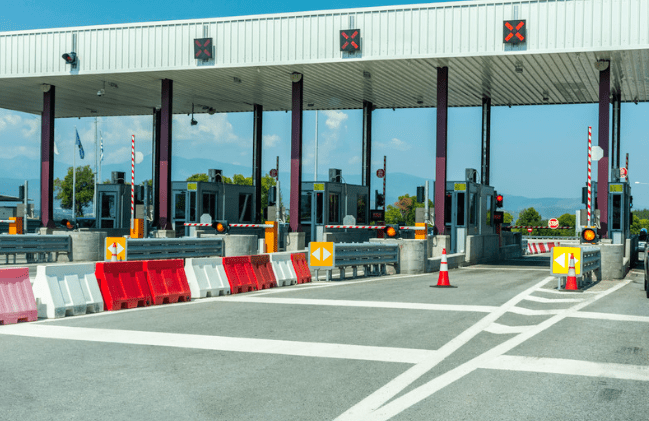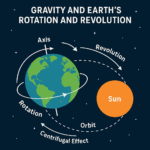
Revolutionizing Toll Collection in India with GNSS: A Comprehensive Overview

The landscape of transportation in India is on the brink of a significant transformation with the adoption of Global Navigation Satellite Systems (GNSS) technology. This cutting-edge technology is poised to replace the existing toll collection system, offering a more efficient, transparent, and user-friendly approach to road management. In this blog post, we’ll delve into GNSS, its role in India’s toll collection, the benefits, and the potential challenges, all supported by relevant stats and analytics.
Understanding GNSS: A Quick Overview
Global Navigation Satellite Systems (GNSS) refer to the constellations of satellites that provide geolocation and time information to a GNSS receiver anywhere on Earth. The most prominent GNSS systems include:
- GPS (USA)
- GLONASS (Russia)
- Galileo (EU)
- BeiDou (China)
These systems are widely used in various applications, from navigation to agriculture. In India, GNSS is now being considered as a replacement for traditional toll collection methods.
Current Toll Collection System in India
India’s current toll collection system relies primarily on manual toll booths and FASTag, an electronic toll collection system using Radio Frequency Identification (RFID) technology. While FASTag has streamlined toll collection by reducing wait times and congestion, it is not without its limitations:
- Congestion at Toll Booths: Despite FASTag, significant traffic jams still occur at toll plazas.
- High Maintenance Costs: Toll plazas require constant maintenance and staffing, leading to higher operational costs.
- Revenue Leakage: Manual intervention and loopholes in the system often result in revenue leakage.
The GNSS-Based Toll Collection System
GNSS technology offers a seamless, satellite-based solution for toll collection, eliminating the need for physical toll booths. The system works by tracking a vehicle’s movement via GNSS satellites, automatically calculating the toll based on the distance traveled on toll roads.
How It Works:
- GNSS Tracking: Vehicles are equipped with GNSS-enabled devices that track their movement in real-time.
- Automatic Toll Calculation: The toll is calculated based on the distance traveled on toll roads.
- Direct Payment: The toll amount is automatically deducted from the vehicle owner’s linked account.
Key Benefits:
- Reduced Congestion: No more stopping at toll booths, leading to smoother traffic flow.
- Lower Operational Costs: Elimination of toll plazas and related infrastructure reduces costs.
- Increased Revenue: Accurate tracking and automated toll collection minimize revenue leakage.
- Transparency: Real-time tracking and billing increase transparency and reduce fraud.
GNSS in India: Current Status and Future Prospects
India has already made significant strides in the GNSS domain with its regional navigation satellite system, NavIC (Navigation with Indian Constellation). NavIC, developed by the Indian Space Research Organisation (ISRO), provides accurate position information over India and the surrounding region.
Key Stats and Analytics:
| Aspect | Current System | GNSS-Based System |
|---|---|---|
| Toll Collection Points | 670+ Toll Plazas | GNSS Satellite Network |
| Toll Collection Method | Manual, FASTag (RFID) | Satellite-Based (GNSS) |
| Annual Revenue | $3.7 Billion (approx.) | Potential Increase by 20-25% |
| Traffic Congestion | High at Peak Hours | Significantly Reduced |
| Operational Costs | High | Lower by 30-40% |
| Revenue Leakage | 5-10% | Less than 1% |
Challenges and Considerations
While the GNSS-based toll collection system offers numerous advantages, several challenges need to be addressed for successful implementation:
- Initial Setup Costs: The installation of GNSS devices in millions of vehicles could be a costly endeavor.
- Technology Adoption: Drivers and fleet operators will need to adapt to the new system, which may require extensive awareness campaigns.
- Data Privacy: Continuous tracking of vehicles raises concerns about data privacy and security.
- Infrastructure Development: Expanding GNSS infrastructure across India to ensure consistent and reliable service.
Conclusion: A Roadmap to the Future
The adoption of GNSS for toll collection in India represents a significant leap toward smarter, more efficient transportation infrastructure. By eliminating the need for physical toll booths, reducing congestion, and improving revenue collection, GNSS can revolutionize how India manages its highways.
As India prepares to transition to a GNSS-based system, it is crucial to address the associated challenges, ensuring a smooth and successful rollout. With the right strategies in place, GNSS could pave the way for a new era of transportation in India, setting a benchmark for other countries to follow.
Hello, I am Aman (: Full Time Traveler :) At the age of 41, in April 2023, fueled by my love for travel and the determination not to remain fixed like a tree, I embarked on a bold journey. Having dedicated 17 years to a corporate job, I chose to transition from a full-time employee to a full-time traveler, driven by the desire to break free from the routine and constraints of a conventional life. Along the way, I not only explored the wonders of travel but also uncovered the transformative power of financial freedom. I realized how it could liberate me to lead a life teeming with adventure, purpose, and fulfillment. Through my blogs, I am passionately sharing my story, aiming to inspire and provide valuable guidance to those, like me, who aspire to weave travel into a life overflowing with limitless possibilities.






















Post Comment
You must be logged in to post a comment.